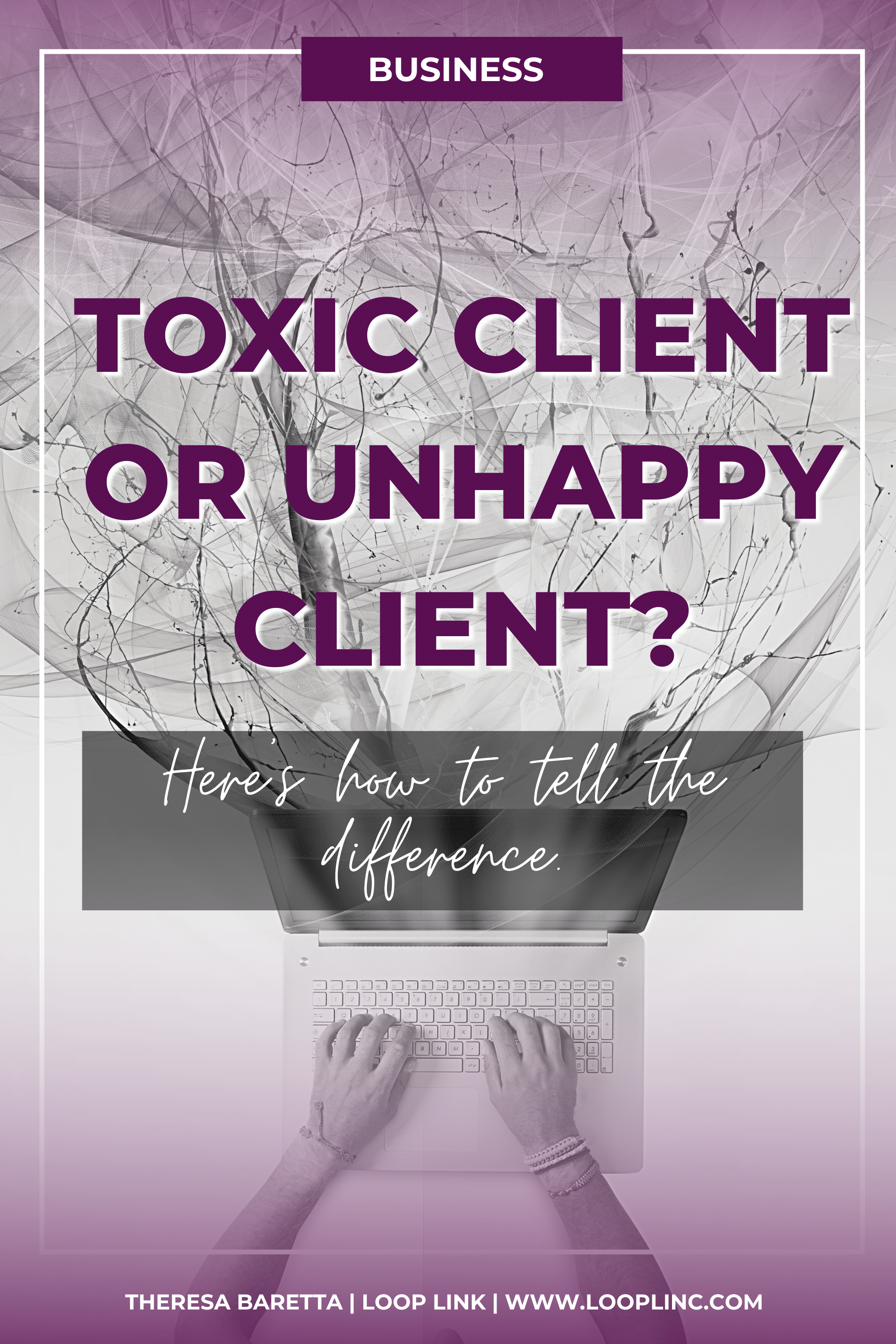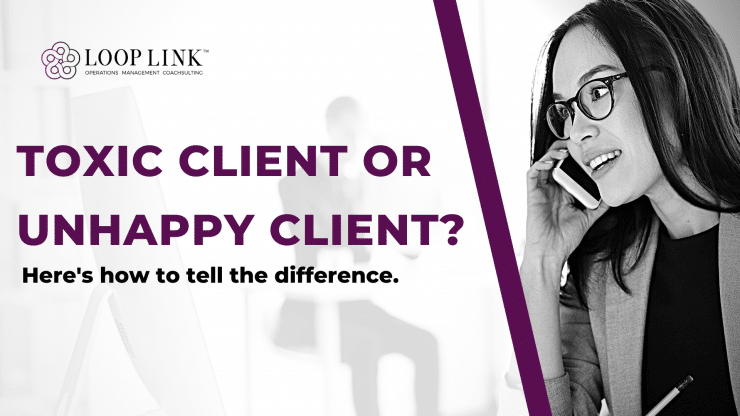In a perfect world, creative CEOs and agency owners would be able to spot toxic clients long before they agreed to work with them. But despite thorough on-boarding and client qualification processes, these damaging clients can (and do) go undetected— leading to much bigger issues.
This issue becomes even more complex when you factor in that not all unhappy clients are toxic clients. Suddenly, CEOs and agency owners are tasked with the challenge of determining which client relationships are salvageable and which are poisonous to their overall productivity and viability.
If you’ve ever wondered how to separate toxic clients from unhappy clients, or tried to repair a damaged client relationship, there are some methods you can use to determine if you should invest more time and energy or simply walk away.
Unhappy Client VS Toxic Client: How to Tell The Difference
First things first— unhappy clients want a solution. They decided to work with you in good faith but their expectations have not been met. Toxic clients, on the other hand, aren’t looking for a solution. They’re more motivated by making a point, getting a discount, or criticizing your business.
Let’s take a closer look at an unhappy client VS toxic client.
Unhappy Clients
- Are willing to communicate with you in a respectful and professional manner
- Have realistic expectations and demands
- Are solution-focused
- Are more concerned about their desired outcome than receiving a discount or free services
- Do not chew through huge chunks of time or continuously create more work than is necessary
- Make themselves available when pertinent discussions are required and are willing to work collaboratively to reach a fair and reasonable compromise
Toxic Clients
- Resort to insults, yelling, threats, or other forms of verbal abuse when issues arise.
- Demand frequent attention and expect you to drop what you’re doing to serve them at any given time.
- Have unrealistic expectations that weren’t communicated or agreed upon at the beginning of your working relationship.
- Consume a large portion of your time and their projects consistently go longer than originally expected.
- Are more focused on “being right”, saving money, or belittling your efforts as opposed to actually deciding on a mutually beneficial solution
- Making effective communication difficult by only responding to calls when they need something, cancelling meetings last minute, being passive-aggressive in emails, etc.

How to Handle the Situation
Now that we’ve distinguished one from the other, how should we respond?
Dealing with Unhappy Clients
If you are trying to navigate a damaged client relationship, there is good news— the damage can be repaired, as long as both parties are willing to engage and move forward in a healthy way.
Unhappy clients are usually more disappointed than they are angry. They had high hopes for their product, service, or experience and feel they were let down. But if the situation was to be rectified, they would be understanding and more than happy to move forward on the same page.
Below are some steps to take to repair a damaged client relationship:
1. Pinpoint the Problem
What, specifically, was the client disappointed by? Why did the issue occur? What were the contributing factors? Which team members were responsible?
2. Be Empathetic
Acknowledge the inconvenience, frustration, or adversity the client is experiencing as a result of the error. Apologize sincerely, be accountable for what went wrong, and assure them you take their concerns seriously.
3. Communicate Your Plan
Walk the client through each action you intend to take to resolve the issue and repair your relationship. Will you be training your team members to address similar future situations differently? Will you be implementing a new system? Are you willing to do additional work for the client free of charge? Tell the client exactly what they can expect moving forward.
Letting Go of a Toxic Client
In most cases, it is not possible to establish a healthy working relationship with toxic clients. You can try to set boundaries with the individual and reevaluate expectations, but if they continue to exhibit problematic behaviors, the best resolution will likely be to sever ties.
Below are some steps to take when letting go of a toxic client:
1. Keep a Paper Trail
You may decide to meet with the client in person or have a telephone conversation when explaining your reason for ending your agreement, but it is important to follow up these conversations with a written statement. Documenting any grievances or issues that contributed to the deterioration of the relationship will ensure you are protected should the client threaten to take legal action. Be sure to date all written statements and provide a copy to the client.
2. Maintain Your Composure
During times of tension, it can be tempting to fight fire with fire, but this will not serve you in the long-run. Remain calm, communicate clearly, and avoid speaking negatively about the client. Stick to the facts and wish the client well in their future endeavors.
3. End on a High Note
Complete all outstanding projects for the client and provide them with access to all pertinent documents, materials, account details, etc. Do not compromise the quality of work simply because the relationship did not work out. Offer a referral to another provider who may be better suited to their needs, if you know one. Making a good final impression is a sign of your character as a business owner.
Remember, not every client is your ideal client. Letting go of a toxic client does not mean you failed as a CEO or that your operations aren’t effective. It simply means you value your time, energy, and resources and want to allocate them to relationships where they will be most effective and appreciated.
It is also normal to have unhappy clients from time to time. While it’s certainly not something that should be occurring frequently, these situations also shouldn’t be viewed as catastrophic. They are the best learning experiences and can actually improve your client experience in the long run if you use them to inform change and make improvements!
Your Move
Would you like to create a 5-star client experience that significantly reduces the likelihood of unhappy clients? Get higher retention, renewal and referrals with my Wow Your Clients Playbook.
Come over to our Free Exclusive Community where you can find support from other CEOs on the same journey.





